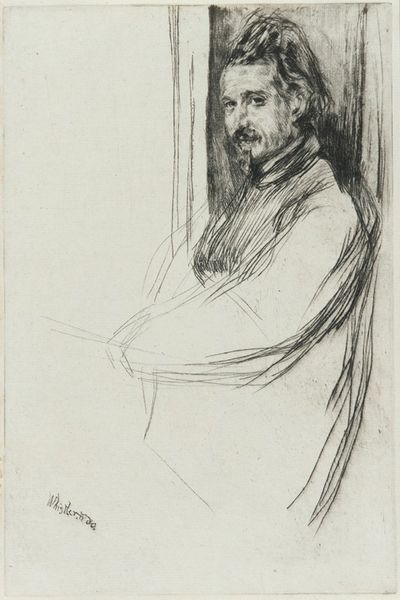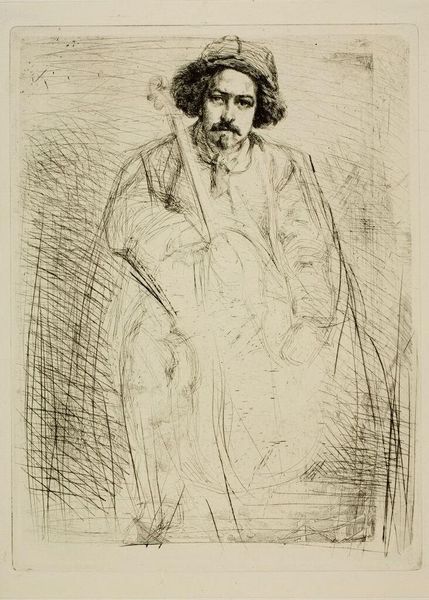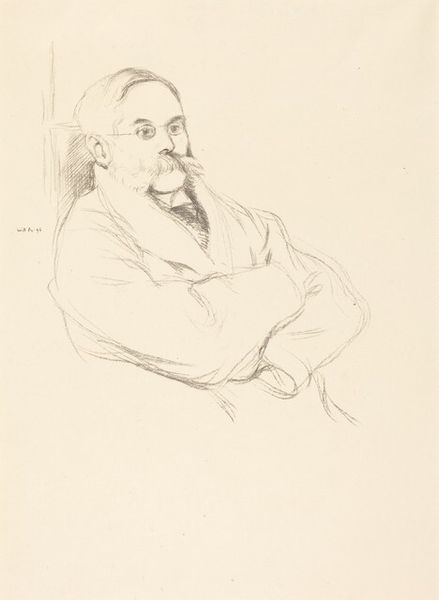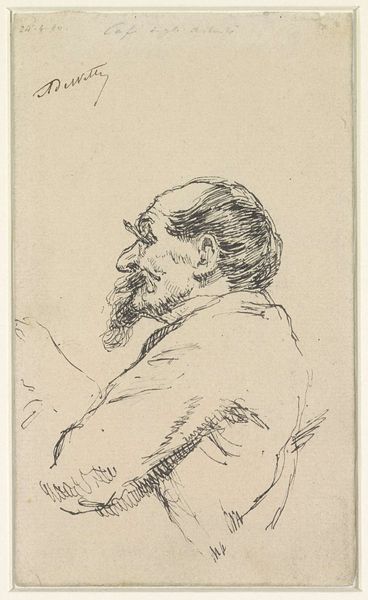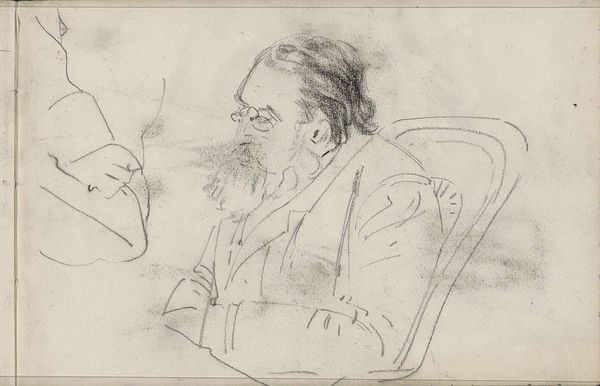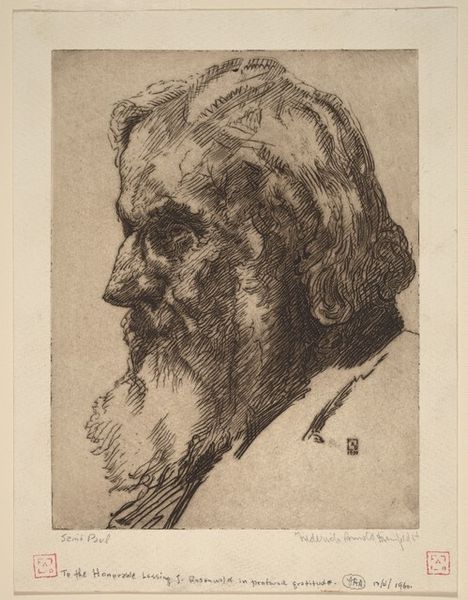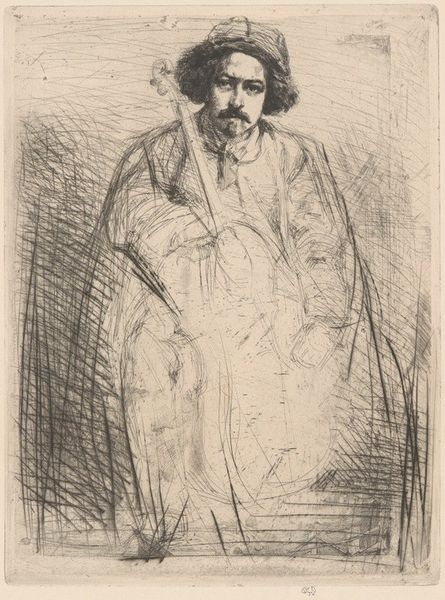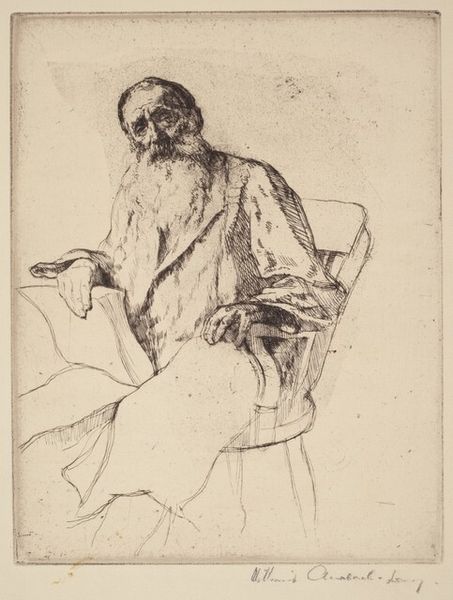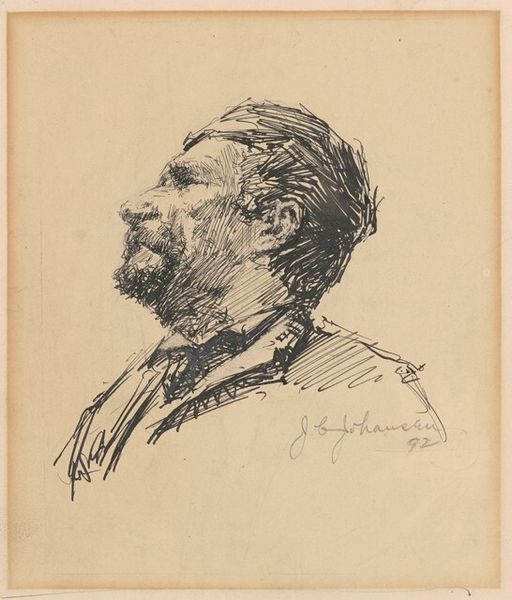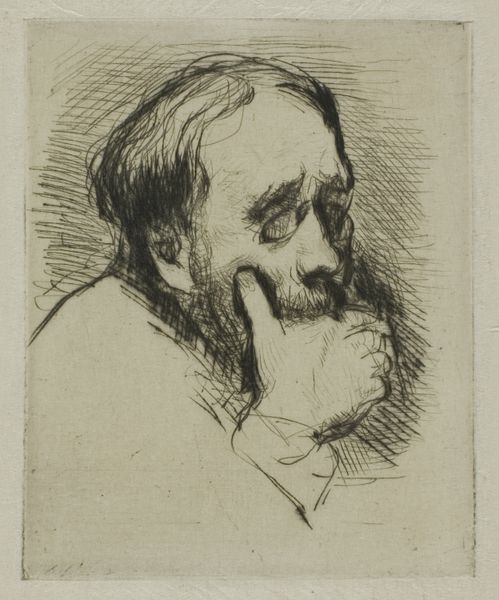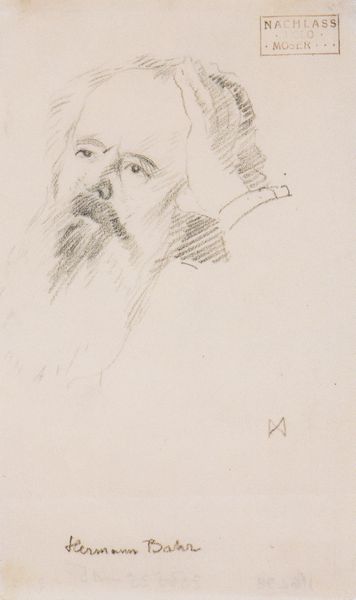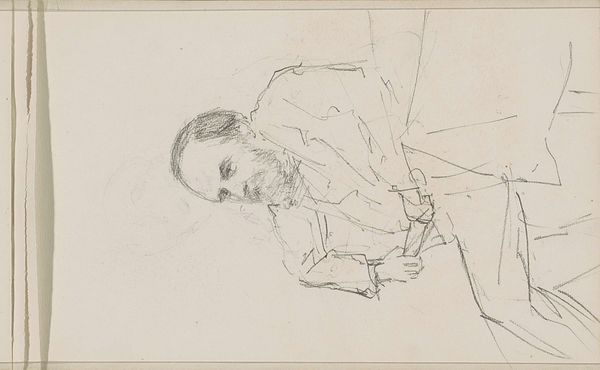
drawing, print, pencil, graphite
#
portrait
#
drawing
# print
#
pencil sketch
#
pencil drawing
#
pencil
#
graphite
#
portrait drawing
Copyright: National Gallery of Art: CC0 1.0
Editor: So, here we have Charles Haslewood Shannon's portrait of Alphonse Legros. It's a drawing, probably done with pencil or graphite. There's a softness to it, almost a melancholy mood. What do you see in this piece, particularly regarding how it resonates with its cultural moment? Curator: What immediately strikes me is the intimacy Shannon achieves. Consider the medium: graphite, easily smudged, reworked. This speaks to the ephemeral nature of memory, doesn’t it? Look at Legros' pose, relaxed, almost contemplative. He’s an artist himself, and this portrait isn't about grandstanding. It's about capturing a fellow artist in a moment of quiet reflection. Doesn't his gaze remind you of similar portraits by Rembrandt? What symbolic weight would that lineage give it, do you think? Editor: That’s a good point. Rembrandt definitely imbued his portraits with such psychological depth. The association lends a sense of importance, and timelessness. But how much of that is really there, and how much is added by us, knowing the history? Curator: Ah, but that is precisely where the image derives power! Cultural memory isn’t static; it's a palimpsest. We layer our understanding upon it, connecting to the emotions and ideas of the past, transforming them into something newly meaningful for us today. Editor: It's interesting to think about how Shannon’s choice of such a subtle, easily reworked medium emphasizes how cultural memory changes and evolves over time. Curator: Precisely. The softness of the graphite mimics the hazy recollection that is fundamental to cultural memory and continuities over time. Editor: I've learned something new about portraiture and its symbolic links to memory, thank you! Curator: Likewise. A rewarding exchange!
Comments
No comments
Be the first to comment and join the conversation on the ultimate creative platform.
